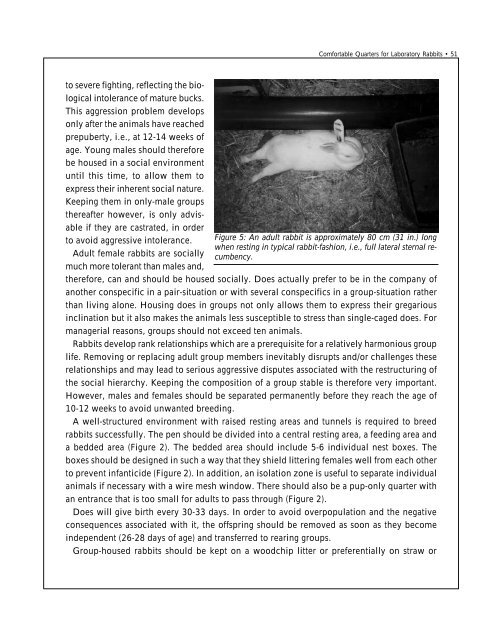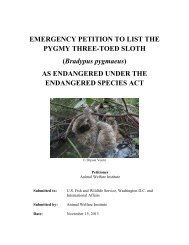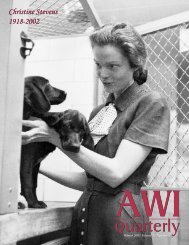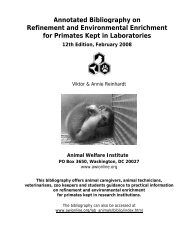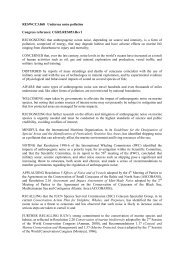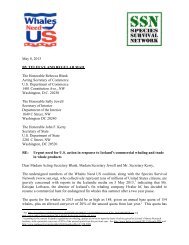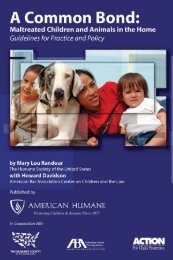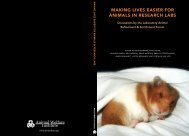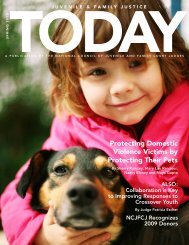comfortable quarters for laboratory rabbits - Animal Welfare Institute
comfortable quarters for laboratory rabbits - Animal Welfare Institute
comfortable quarters for laboratory rabbits - Animal Welfare Institute
Create successful ePaper yourself
Turn your PDF publications into a flip-book with our unique Google optimized e-Paper software.
Com<strong>for</strong>table Quarters <strong>for</strong> Laboratory Rabbits • 51to severe fighting, reflecting the biologicalintolerance of mature bucks.This aggression problem developsonly after the animals have reachedprepuberty, i.e., at 12-14 weeks ofage. Young males should there<strong>for</strong>ebe housed in a social environmentuntil this time, to allow them toexpress their inherent social nature.Keeping them in only-male groupsthereafter however, is only advisableif they are castrated, in orderto avoid aggressive intolerance.Adult female <strong>rabbits</strong> are sociallymuch more tolerant than males and,there<strong>for</strong>e, can and should be housed socially. Does actually prefer to be in the company ofanother conspecific in a pair-situation or with several conspecifics in a group-situation ratherthan living alone. Housing does in groups not only allows them to express their gregariousinclination but it also makes the animals less susceptible to stress than single-caged does. Formanagerial reasons, groups should not exceed ten animals.Figure 5: An adult rabbit is approximately 80 cm (31 in.) longwhen resting in typical rabbit-fashion, i.e., full lateral sternal recumbency.Rabbits develop rank relationships which are a prerequisite <strong>for</strong> a relatively harmonious grouplife. Removing or replacing adult group members inevitably disrupts and/or challenges theserelationships and may lead to serious aggressive disputes associated with the restructuring ofthe social hierarchy. Keeping the composition of a group stable is there<strong>for</strong>e very important.However, males and females should be separated permanently be<strong>for</strong>e they reach the age of10-12 weeks to avoid unwanted breeding.A well-structured environment with raised resting areas and tunnels is required to breed<strong>rabbits</strong> successfully. The pen should be divided into a central resting area, a feeding area anda bedded area (Figure 2). The bedded area should include 5-6 individual nest boxes. Theboxes should be designed in such a way that they shield littering females well from each otherto prevent infanticide (Figure 2). In addition, an isolation zone is useful to separate individualanimals if necessary with a wire mesh window. There should also be a pup-only quarter withan entrance that is too small <strong>for</strong> adults to pass through (Figure 2).Does will give birth every 30-33 days. In order to avoid overpopulation and the negativeconsequences associated with it, the offspring should be removed as soon as they becomeindependent (26-28 days of age) and transferred to rearing groups.Group-housed <strong>rabbits</strong> should be kept on a woodchip litter or preferentially on straw or


